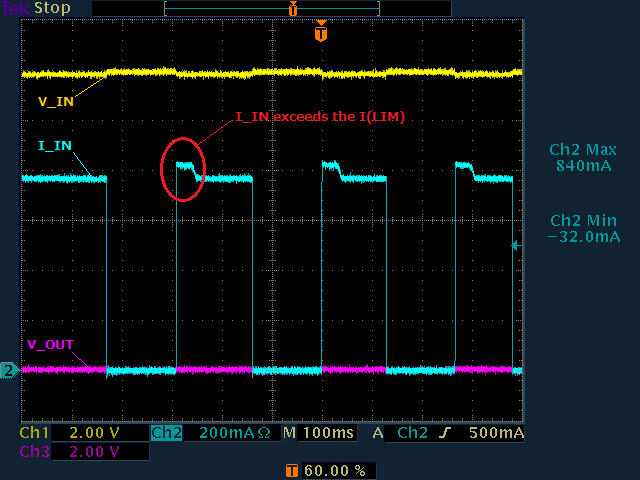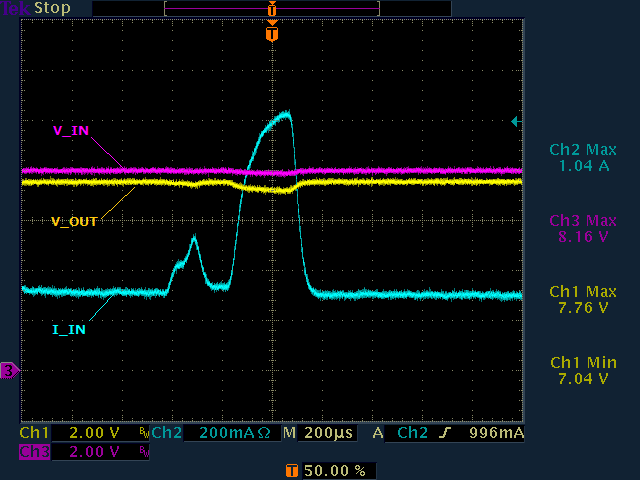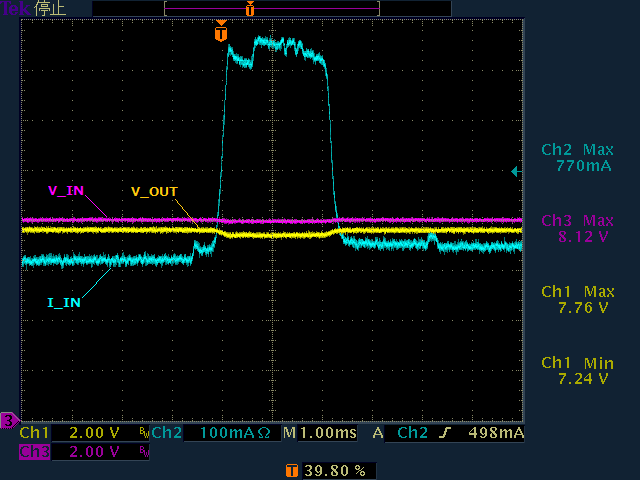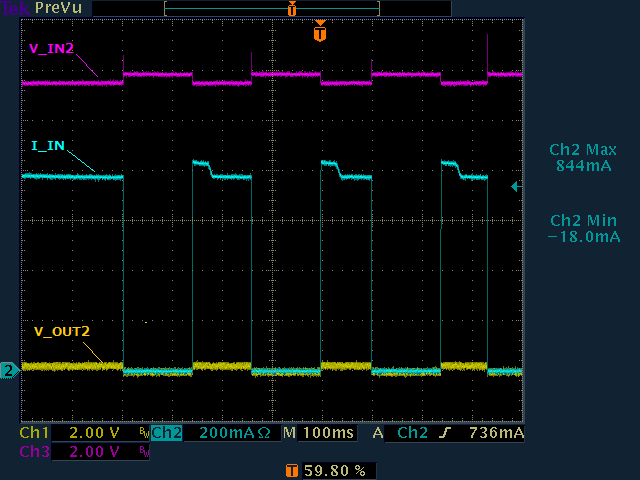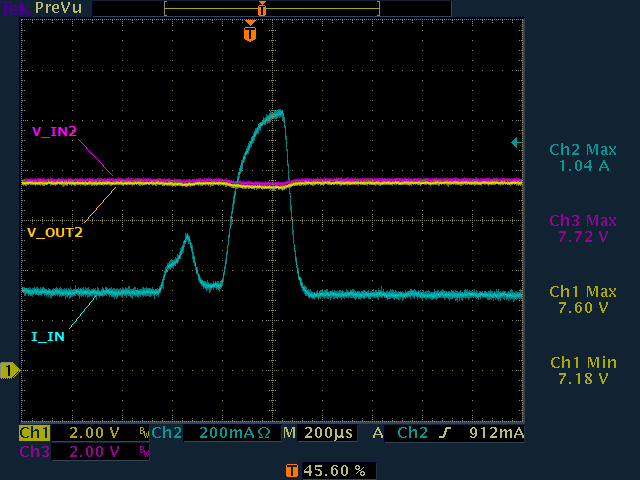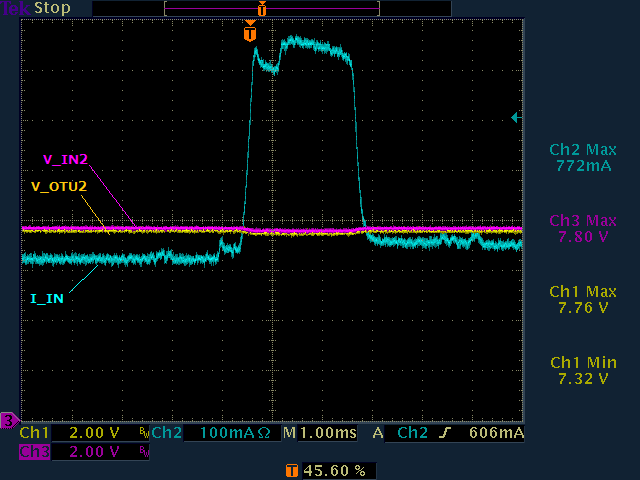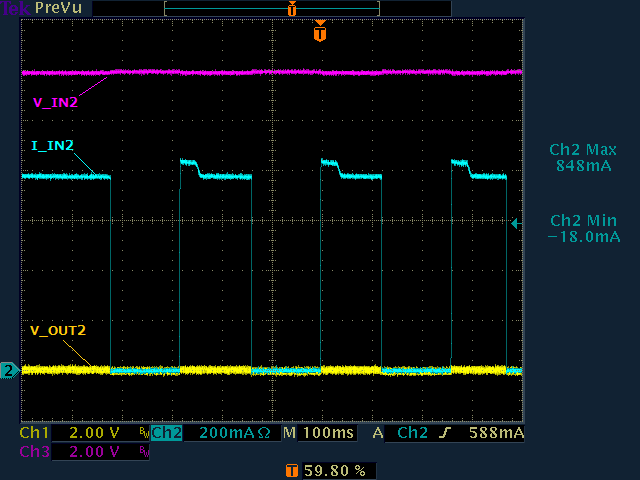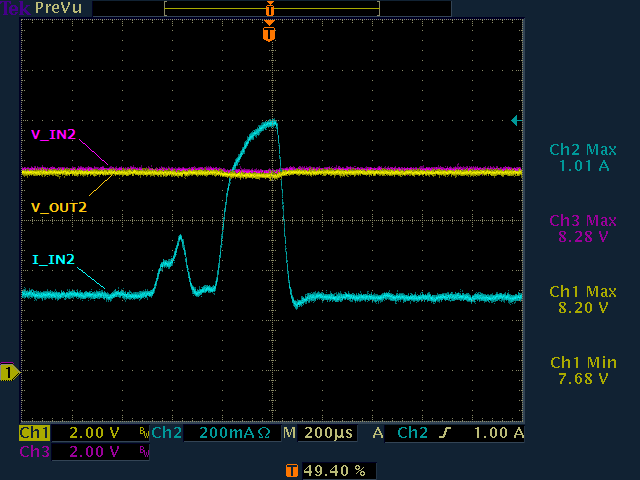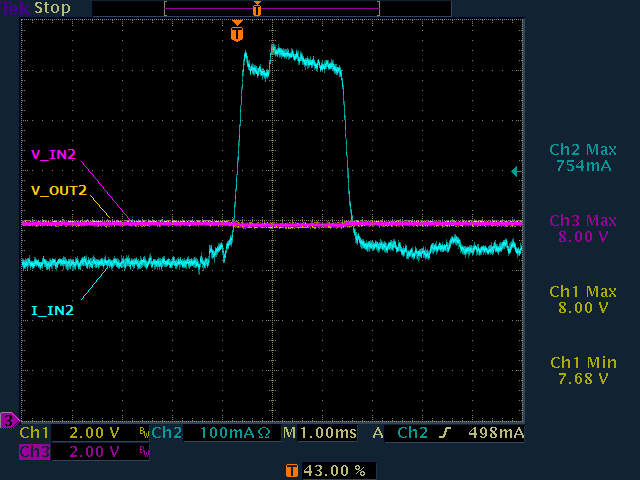Other Parts Discussed in Thread: TPS25942EVM-635
Hello,
I have downloaded and used the TPS2594x Design Calculation Tool (TPS2594x-Calculation Sheet V1p0.xlsx).
There are Imax and Ilimit columns, but Imax is not mentioned in the data sheet.
If Ilimit is set to 0.82A, Imax will be displayed as 0.68A.
Is it possible to keep the current exceeding Imax flowing?
For example, set Ilimit to 0.82A and keep 0.8A flowing.
Best Regards.
Yasuhara


